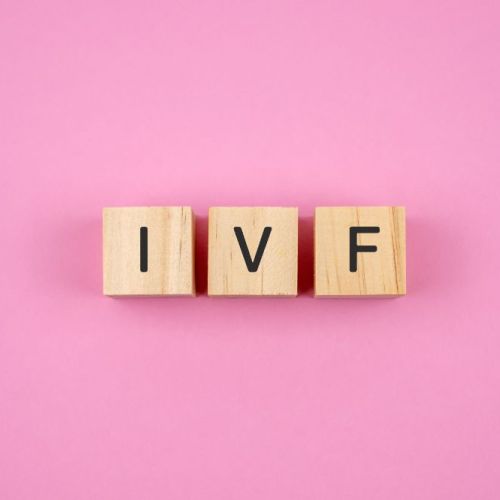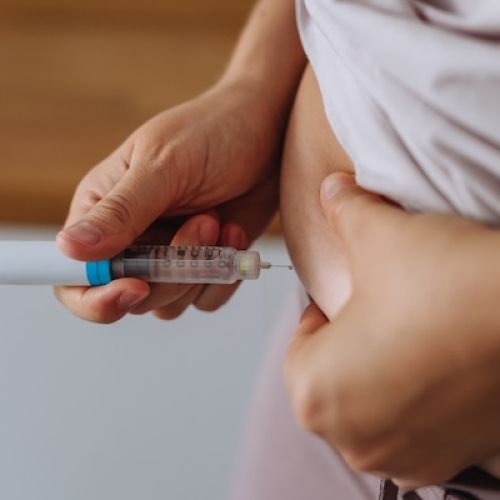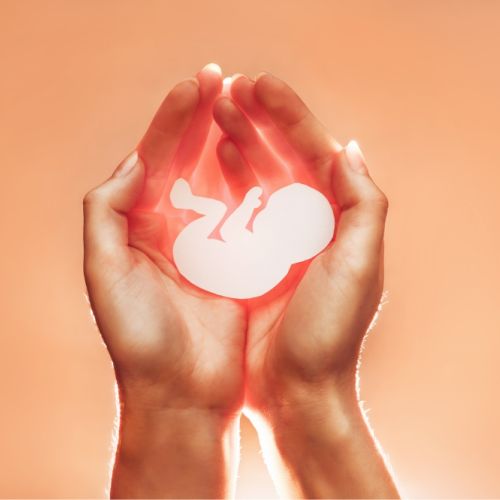Tubal Ligation Reversal vs IVF: Choosing the Right Path for Parenthood

Deciding how to grow your family after a tubal ligation can be overwhelming. Two of the most common options are tubal ligation reversal and in vitro fertilization (IVF). Both offer a chance to conceive, but each comes with unique advantages, risks, and considerations. Understanding these differences can help you choose the best path for your family-building goals.
In this guide, we’ll break down how these two options compare in terms of success rates, costs, and recovery time, while also helping you assess which approach may fit your lifestyle and medical history.
Tubal Ligation Reversal vs IVF: Understanding the Basics
What Is Tubal Ligation Reversal?
Tubal ligation reversal is a surgical procedure that reconnects the fallopian tubes after they’ve been cut, tied, or blocked during a previous tubal ligation surgery. The goal is to restore natural fertility by reconnecting the tubes to make them open all the way through, allowing the eggs to travel from the ovaries to the uterus for natural conception.
The procedure is typically performed laparoscopically or through a small abdominal incision. The latest methods require only 1 day for the procedure and 7 days of light bed rest following it. Recovery time is usually 2 to 4 weeks, but it can take several months for patients to heal completely and start trying to conceive.
Typical tubal ligation candidates include:
- Women under 40 with a significant portion of their fallopian tubes intact.
- Those who originally had a less invasive form of tubal ligation.
- Patients who want to conceive naturally and are planning to have multiple children.
What Is IVF (In Vitro Fertilization)?
IVF is a fertility treatment that bypasses the fallopian tubes entirely. Instead, eggs are retrieved from the ovaries and fertilized with sperm in a lab. The resulting embryo is then transferred directly into the uterus.
IVF is a well-established option for women with blocked fallopian tubes, or for those whose partner has male fertility issues, such as a low sperm count.
Typical IVF candidates include:
- Women with minimal or no healthy fallopian tube tissue.
- Couples with male factor infertility.
- Those who want to avoid surgery and achieve pregnancy more quickly.
Comparing Tubal Ligation Reversal vs IVF
| Factor | Tubal Ligation Reversal | IVF |
|---|---|---|
| Eligibility | Depends on type of tubal ligation, age, and reproductive health. | Suitable for most women, regardless of tubal status. |
| Procedure | Outpatient surgery to reconnect fallopian tubes. | Hormonal stimulation, egg retrieval, fertilization, and embryo transfer. |
| Time to Pregnancy | 6-12 months on average, depending on fertility. | ~2 months per cycle; pregnancy possible within weeks if successful. |
| Success Rate | 40-80% depending on age, tube length, and fertility factors. | 40-50% per cycle for women under 35; lower for older women. |
| Recovery Time | 2-4 weeks before resuming normal activity. | 1-2 days after egg retrieval, light activity after embryo transfer. |
| Cost | $6,000 - $15,000 (one-time surgery). | $10,000 - $15,000 per cycle, often requiring multiple cycles. |
| Testing Needed | Pre-surgical evaluation, HSG test to assess tubal health. | Ovarian reserve testing, semen analysis, uterine evaluation. |
| Additional Risks | Ectopic pregnancy, scarring, surgical complications. | Ovarian hyperstimulation syndrome (OHSS), emotional stress. |
| Ideal for | Women under 40 who want multiple children and have healthy tubes. | Women with tubal damage, male infertility issues, or age-related fertility decline. |
| Family-Building Goals | Best for those wanting to conceive naturally multiple times. | Better for those planning for 1-2 children or needing embryo freezing options. |
Time to Pregnancy
The timeline to pregnancy varies significantly between tubal ligation reversal and IVF.
Tubal Ligation Reversal
After a successful tubal reversal surgery, it can take several months to a year to conceive naturally.
- Most women who conceive after tubal reversal do so within 6 to 12 months.
- Factors like age, egg quality, and partner’s sperm health play a role in how quickly pregnancy occurs.
- If pregnancy does not occur after a year, further fertility treatments may be needed.
IVF
The IVF process can result in pregnancy much faster than tubal reversal, but the timeline depends on individual response to treatment.
- A single IVF cycle takes about 6 to 8 weeks from ovarian stimulation to embryo transfer.
- If successful, pregnancy occurs within two weeks after embryo transfer.
- If the first cycle is unsuccessful, additional cycles may be required, extending the timeline.
Success Rates
Success rates are one of the most important factors when choosing between tubal ligation reversal and IVF for achieving pregnancy.
Tubal Ligation Reversal Success RatesThe success rate for tubal reversal ranges from 40% to 80%, depending on factors like the type of tubal ligation, the availability of healthy tissue on each end of the tube and the length of the reconnected tube. Women under 35 generally have the highest success rates, while older women may face more challenges.
IVF Success RatesIVF success rates vary based on age, with younger women typically experiencing higher success. For women under 35, the success rate for a single IVF cycle can be 40% to 50%, while it drops to 10% to 15% for women over 40. IVF may be more predictable in cases where tubal damage or male factor infertility is involved.
Overall, IVF is often the better option because it gives patients the highest chance of pregnancy in the shortest amount of time and avoids a significant surgical procedure. Tubal reversal has a higher success rate than IVF, but the success rate of tubal reversal decreases with age.
Affordability: Cost and Insurance Coverage
The financial aspect is another major consideration.
Tubal ligation reversal is typically a one-time cost, ranging from $6,000 to $15,000, depending on the surgeon and facility. However, insurance coverage for the procedure is limited in most cases. At the California Center for Reproductive Health, one of the leading centers specializing in all types of Tubal Ligation Reversals, we offer tubal reversal surgery for a fixed and affordable price of $5,500. Click here to learn more on our Tubal Ligation Reversal Pricing.
IVF Costs
IVF is generally more expensive, with a single cycle costing $10,000 to $15,000. Many patients require multiple cycles, which can significantly increase the total expense. Some insurance plans offer partial coverage, but out-of-pocket costs are common.
If you’re planning to have multiple children, tubal reversal may be more cost-effective in the long run. On the other hand, IVF could be a better option for those seeking only one child.
Insurance coverage varies for both tubal reversal and IVF, and patients should check with their provider before making a decision. Consulting with a fertility center can provide personalized guidance and support for understanding the costs and insurance coverage for both procedures.
Risks and Recovery
Both procedures come with risks and recovery periods that should be carefully considered.
Tubal Ligation Reversal Risks and Recovery
- There is an increased risk for ectopic pregnancy (where a fertilized egg implants outside the uterus) after tubal reversal surgery, which can be life-threatening.
- Even when reattaching the tubes is successful, there can be scarring of the tissue that interrupts the flow of the tube and can reduce fertility.
- Other risks involved with tubal reversal include infection, poor tissue healing, and damage to surrounding tissues.
- Recovery time of 2–4 weeks, depending on the surgical approach, but full healing may take months.
IVF Risks and Recovery
- The greatest risk of IVF is ovarian hyperstimulation syndrome (OHSS), which can cause discomfort and complications
- Another common risk is to have multiple pregnancies if more than one embryo is transferred
- Emotional and physical stress from repeated treatment cycles
- After egg retrieval, 1–2 days of rest is typically needed. After embryo transfer, many doctors recommend avoiding strenuous activity for 1–2 weeks, but normal daily activities can usually resume within a day or two.
Factors to Help You Decide
Age and Fertility Health
Age is a key factor in the decision between IVF and tubal reversal surgery. As a woman ages, the number and quality of her eggs decline, making it harder to get pregnant.
- Women under 35: Both options have high success rates, but tubal reversal is often preferred for those who want multiple children.
- Women between 35 and 40: Tubal reversal may still be an option, but fertility begins declining. IVF offers a more controlled approach with better outcomes in this age range.
- Women over 40: IVF is generally the better choice, as egg quality and ovarian reserve decline, making natural conception after tubal reversal more difficult.
Other fertility factors, such as ovarian reserve (AMH levels), egg quality, and regular ovulation, should also be evaluated before deciding. Our fertility specialists can perform blood tests and ultrasounds to assess these factors.
Medical and Surgical History
Your medical and surgical history, including previous tubal ligations, will determine whether tubal reversal is even an option.
- Type of Tubal Ligation: Some methods, like clips or rings, are easier to reverse, while full removal of the tubes makes reversal impossible.
- Scarring & Blockages: If previous surgeries have left excessive scar tissue, the success of tubal reversal may be lower.
- Uterine Health: Conditions like fibroids or endometriosis can impact both tubal reversal and IVF success.
- Other Surgeries: If you’ve had past abdominal surgeries (C-sections, myomectomies), consult with your doctor to see if tubal reversal is a viable option.
For women with significant scarring or blocked tubes, IVF may be the better choice, as it bypasses the tubes altogether. Always consult with a fertility specialist to make the best decision for you.
Partner’s Fertility
Male factor infertility is a critical factor in deciding between tubal reversal and IVF for women who have had their tubes tied.
- Low sperm count or poor motility? IVF is likely the better option, as it uses intracytoplasmic sperm injection (ICSI) to directly fertilize the egg.
- Healthy sperm parameters? Tubal reversal may be a good choice, as it allows for natural conception.
- Uncertain about sperm quality? A semen analysis can determine whether male factor infertility is an issue.
If male fertility is a concern, IVF may provide a more controlled and effective solution.
Your Family-Building Goals
Your long-term family goals should shape your decision.
- Want multiple children? Tubal reversal may be the better option, as it allows for natural conception without additional procedures.
- Only planning for one more child? IVF might be more suitable, since it eliminates the need for surgery and allows for embryo selection.
- Want to preserve fertility for the future? IVF allows you to freeze embryos for later use, offering more flexibility.
- Want more control over your pregnancy? IVF allows for more control over the fertilization process (including gender selection), and often a choice among several embryos.
If you’re unsure, discussing your long-term family planning with a fertility specialist can help you align your decision with your reproductive goals.
Lifestyle and Emotional Considerations
Each option comes with lifestyle and emotional considerations that may influence your choice.
- Time Commitment: IVF requires multiple doctor visits, injections, and monitoring, while tubal reversal involves a one-time surgery and recovery period.
- Emotional Factors: IVF can be emotionally demanding, with the uncertainty of each cycle. Tubal reversal offers the possibility of conceiving naturally, but the timeline is unpredictable.
- Physical Recovery: Surgery has a longer recovery time but is a one-time event. IVF requires ongoing hormone treatments and potential multiple cycles.
Consider how each option fits into your personal life, work schedule, and emotional well-being.
Our Patient Success Stories
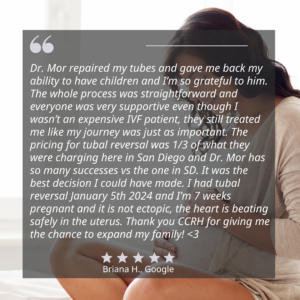
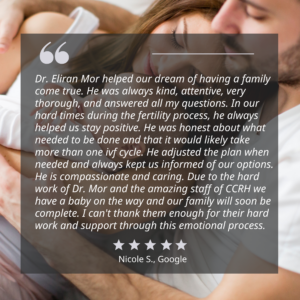
Tubal Ligation vs IVF: Your Path to Parenthood Starts Here
Deciding between tubal ligation reversal and IVF isn’t just about statistics – it’s about what’s right for you. Your age, fertility health, and family-building goals all play a role in finding the best path forward. Your family-building journey should start with a conversation: the best way to make an informed decision is by consulting with our experienced fertility specialists. Schedule an appointment today to take the next step toward growing your family.


